- PagerDuty /
- Integrations /
- Copperegg Integration Guide
Copperegg Integration Guide
Copperegg is a SaaS-based server monitoring service that provides performance statistics, various forms of data visualization, and customized analytics. By providing real-time updates with critical information, you can test your services along with their response times and customize as necessary. In a few simple screens you can monitor your server's health, examine overall and individual service performance, and analyze metrics at your preferred level of granularity. Copperegg can be configured to send alerts to PagerDuty, which can be acknowledged and resolved from within PagerDuty.Follow these instructions to configure Copperegg with PagerDuty. If you have any questions or require assistance, please contact our support team at support@pagerduty.com.
In PagerDuty
- Click Services on the navigation bar.
- On the Services page:
- If you are creating a new service for your integration, click + New Service.
- If you are adding your integration to an existing service, search for the service you want to add the integration to and click into the service. Then click the Integrations tab and click Add a new Integration.
- Select your app from the Integration Type menu and enter an Integration Name.If you are creating a new service for your integration, in General Settings, enter a Name for your new service. Then, in Incident Settings, specify the Escalation Policy, Notification Urgency, and Incident Behavior for your new service.
- Click the Add Service or Add Integration button to save your new integration. You will be redirected to the Integrations page for your service.
- Copy the Integration Key for your new integration.
In Copperegg
Test Notifications
- Within the Copperegg console, click the Alerts Tab.
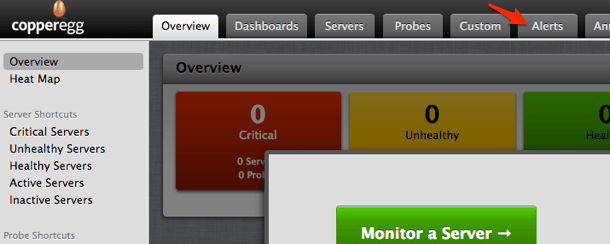
- In the sidebar, click Notification Profiles.

- On the far right side, click on Add A Profile.
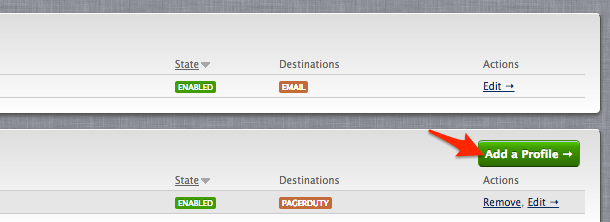
- Under Destinations in New Notification Profile, select PagerDuty.
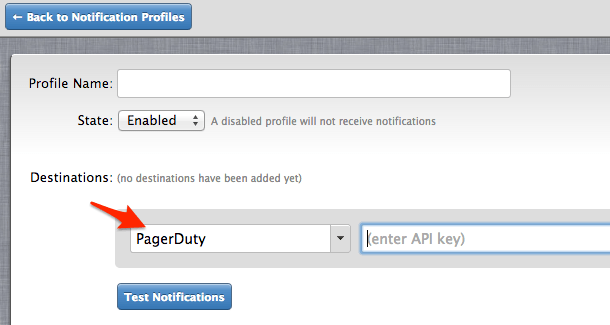
- Paste in the Integration Key copied earlier in the final step while within PagerDuty.
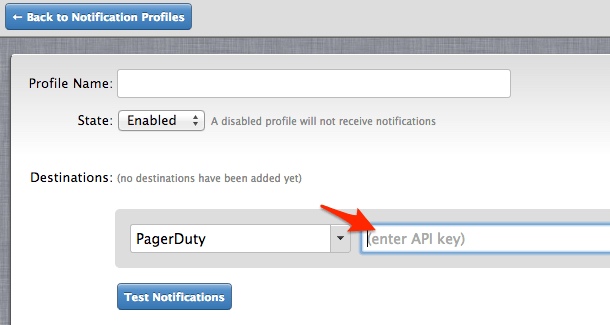
- Click Test Notifications and return to your PagerDuty account to confirm that an alert was triggered.
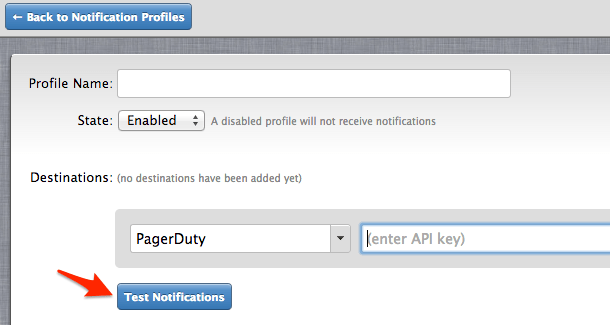
- Log out of Copperegg and go to the Services Tab in your PagerDuty account, where you should see an entry for the newly triggered incident.

Website Monitoring
For the purposes of this guide, I created a simple Rails site using PostgreSQL with the command "rails new generate scaffold title:string body:text" and pushed it to Heroku at https://thawing-mesa-1620.herokuapp.com/.
- Go to the Probes Tab on Copperegg and set up a probe to monitor your site. Notice that this probe is set up to check the website once every minute, the Copperegg default.
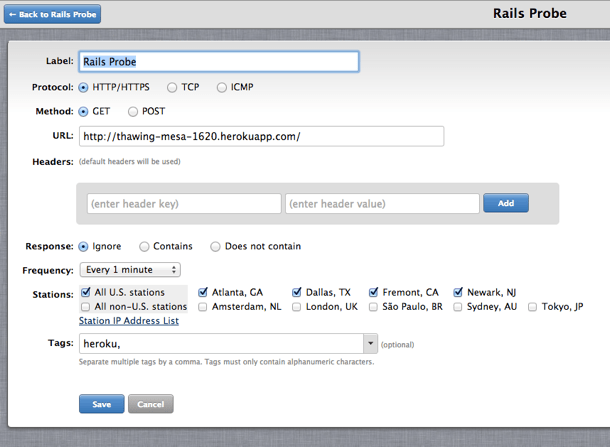
- Go the Alerts Tab and select Configure Alerts. From there, select the alerts you would like to be notified about and add your PagerDuty API service to them. I added Error Status Code, Lost Connectivity, and Site Down to the PagerDuty API service, which I added under a previously created Notification Profile name of PagerTester.
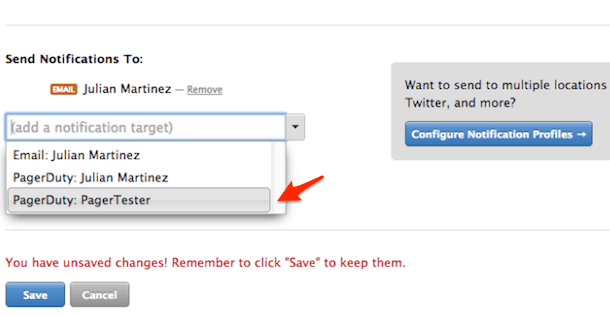
- Confirm that PagerDuty is now visible under the Destinations column of the Configure Alerts view in your Alerts Tab.
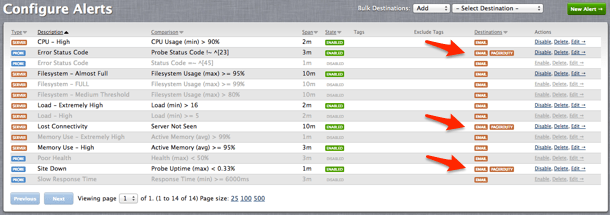
- Everything is now ready to test out your website using PagerDuty's integration with Copperegg. To do this, deliberately introduce an error into your site.In my case, I created an error within the index action in the Posts Controller, by changing the instance variable @posts=Post.all to the undefined @posts=Post.ball. I committed this error to git and issued the command 'git push heroku master' to propagate the error.I could have also used sleep 5 to cause a timeout, or issued the command heroku ps:scale web=0 to shut the site down. Any choice should have the desired effect of creating an alert and notifying PagerDuty.
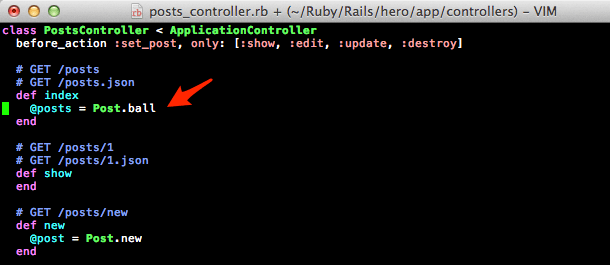
- Verify that the site is down.
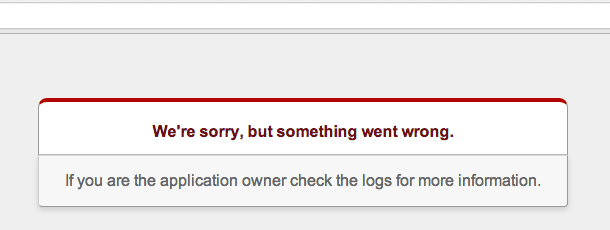
- Wait for the error to appear in Copperegg. When it does, alerts will appear in your tabs in red. Your server health display will also change in appearance.

- Visit the Alerts Tab to determine the error type.
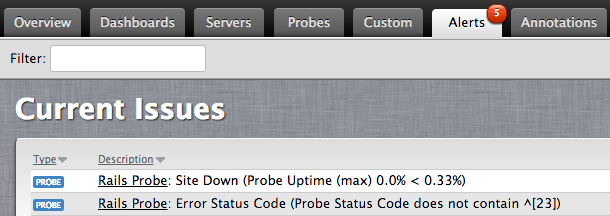
- Log into PagerDuty and confirm that the error is also reflected there.

Congratulations! You've successfully integrated Copperegg with PagerDuty.
FAQ
Can I create individual alerts within Copperegg for multiple services within PagerDuty?
Yes, you can. For instance, you can create another service as a Generic API system and add it to PagerDuty. Repeat the steps shown above to add it to Copperegg. After selecting Test Notification for both services from within Copperegg, alerts for both services will be triggered in PagerDuty.
What are the requirements to add a PagerDuty service to Copperegg?
Your PagerDuty service must have an integration key. After entering this integration key into Copperegg's Notification Profile, press the Test Notifications button and then log in to your PagerDuty account to verify that the alert has successfully registered.
If a site-crashing issue is resolved and Copperegg recognizes that the site is back up, will the PagerDuty incident also by resolved?
No. Copperegg does not automatically resolve incidents.You'll still need to acknowledge and resolve the issue within PagerDuty; once triggered, user input is required before it can be removed.
Still need help?
Please contact us if you’re unable to sort out the difficulty.
Ready to get started?
Try any product on the Operations Cloud for free.
No credit card required.